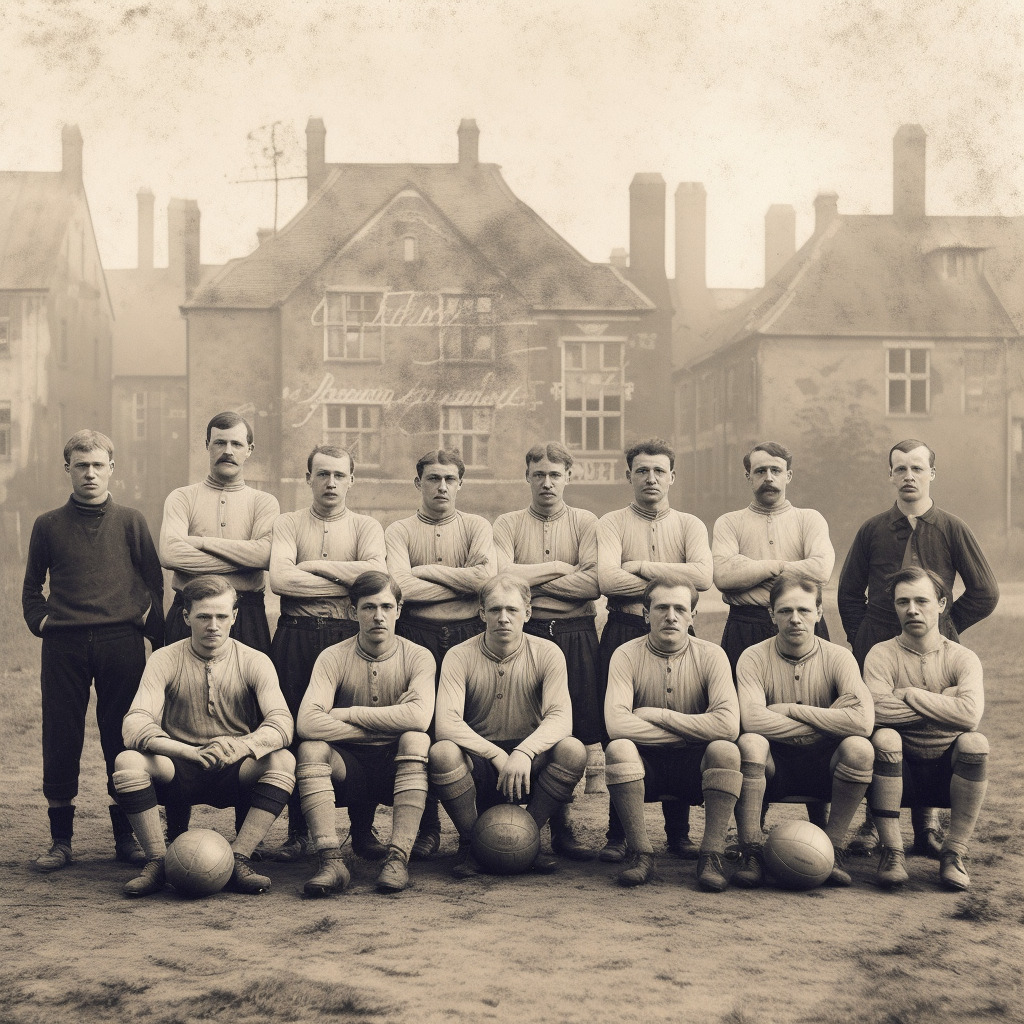
Contents
History of the Scottish premiership
While the Scottish Premiership in its current form dates back only to 2013, its history is intertwined with the broader narrative of professional football in Scotland. It’s more accurate to trace the lineage of top-flight football in Scotland, rather than just the Premiership era.
Here’s a look at the key milestones:
– 1890: The Scottish Football League is founded, establishing the foundation for organized professional football in Scotland. This marks the true beginning of what would eventually become the Premiership.
– 1893: The First Division is established as the top tier of the Scottish Football League. This is the direct ancestor of today’s Premiership.
– 1998: The Scottish Premier League (SPL) is formed, breaking away from the Scottish Football League. This move was driven primarily by financial considerations, allowing the top clubs to negotiate more lucrative television deals.
– 2013: The SPL merges with the Scottish Football League to form the Scottish Professional Football League (SPFL). The top tier of the SPFL becomes the Scottish Premiership, marking the official beginning of the current era.
– Present: The Scottish Premiership continues to be the pinnacle of Scottish football, featuring fierce competition and passionate rivalries.
Structure of the Scottish Premiership
The Scottish Premiership’s structure is unique and adds a significant layer of intrigue to the competition. It involves a split system, dividing the season into two distinct phases.
Phase 1: The regular season
All 12 teams play each other three times (either twice at home and once away, or vice versa), resulting in 33 matches per club. This phase establishes the initial league standings and determines which teams will compete in the championship and relegation battles after the split.
Phase 2: The split
After the 33rd round, the league is divided into two groups of six:
– The top six teams compete for the title and European qualification spots.
– The bottom six teams fight to avoid relegation.
Each Scottish club then plays the other five teams in their group once more, adding five additional matches to their season total. This brings the full season to 38 matches per team.
Impact of the split system
Once the split occurs, teams cannot move between groups, even if a bottom-six team earns more points than a team in the top six. This means that the highest a bottom-six team can finish is 7th place, regardless of their final point tally.
The split system ensures a competitive and high-stakes finish to the season:
– The top teams face only strong opposition in the title race, making every match crucial.
– The bottom teams fight for survival in direct head-to-head battles, intensifying the relegation battle.
Points system
Teams are awarded points based on their match results:
– 3 points for a win
– 1 point for a draw
– 0 points for a loss
League table and tie-breakers
Teams are ranked in the league table according to their accumulated points. In case of a tie, the following tie-breakers are typically used:
– Goal difference
– Goals scored
– Head-to-head record
European qualification
The Scottish Premiership provides several routes to European competitions:
– The league winner qualifies for the UEFA Champions League qualifying rounds.
– The second-placed team also qualifies for the UEFA Champions League qualifying rounds.
– The third-placed team qualifies for the UEFA Europa League qualifying rounds.
– The Scottish Cup winner earns a spot in the UEFA Europa League group stage.
– A UEFA Europa Conference League spot is awarded to the highest-finishing team that has not yet qualified for Europe.
Relegation
– The 12th-placed team at the end of the season is automatically relegated to the Scottish Championship
– The 11th-placed team enters a two-legged play-off game against the Championship play-off winner to retain their place in the Premiership.
Top Scottish teams
The Scottish Premiership is a league of varying fortunes, with history indicating a duopoly of teams dominating the league season, while other teams gun to break their hold.
The old firm
The rivalry between Celtic and Rangers, known as the Old Firm, is one of the most famous and fiercely contested derbies in world football. These two Glasgow clubs have historically dominated Scottish football, winning the vast majority of league titles.
– Celtic FC: Celtic has a rich history and a global fanbase. They are known for their attacking style of play and have won the Scottish Premiership 54 times, and hold the record for most Scottish Cup wins with 42 and are the most recent league champions.
– Rangers FC: Rangers also boast a storied history and a passionate following. They have a strong tradition of success and are always a top contender if not the top contender for the title, having won the Scottish League title a record 55 times, the Scottish Cup 34 times, the Scottish League Cup a record 28 times and the domestic treble on 7 occasions.
Other Notable Clubs
While the old firms (Celtic and Rangers) have traditionally dominated, other clubs have played significant roles in the Scottish Premiership and have occasionally challenged for silverware.
– Heart of Midlothian FC (Hearts): Based in Edinburgh, Hearts have a large and loyal fanbase. They have a history of success and are regularly challenging for the top spots having won the championship 4times, most recently in 1959–60, when they also retained the Scottish League Cup to complete a League and League Cup double – the only club outside of the Old Firm to achieve such a feat.
– Hibernian FC (Hibs): Also based in Edinburgh, Hibs are another historic club with a strong following. The Edinburgh derby between Hearts and Hibs is a passionate affair. Hibernian have won the Scottish league championship 4 times, most recently in 1952.
– Aberdeen FC: Aberdeen, based in the north of Scotland, have a history of challenging the Old Firm and have won the league title in the past. Aberdeen have won 4 league titles, 6 Scottish League Cups and 7 Scottish Cups, including a record three in a row during the 1980s, and are also the only Scottish team to have won 2 European trophies, The European Cup Winners Cup and European Super Cup in 1983.
– Kilmarnock FC: Kilmarnock have had periods of success and are a consistent presence in the top flight. They have won the Scottish Football League Championship once, in the 1964-1965 season, and have lifted the Scottish Cup three times, with their most recent victory in 1997. They also have a notable history in European competitions, having reached the semi-finals of the Inter-City Fairs Cup in 1967.
– Motherwell FC: Motherwell have established themselves as a solid Premiership club and have reached cup finals in recent years. The club have won four major trophies in domestic football: the Scottish League title in 1931–32, the Scottish Cup in 1951–52 and 1990–91, and the Scottish League Cup in 1950–51.
Famous players from the Scottish premiership
The Scottish Premiership has been a breeding ground for footballing talent, showcasing players who have left an indelible mark on the game.
Icons of the Scottish premiership
Here are some of the most iconic figures and achievements in the league:
– Jimmy McGrory (Celtic):
➡️ Goals: McGrory scored an astonishing 550 goals in 408 appearances for Celtic, making him the all-time top scorer in British football history.
➡️ Achievements: He led Celtic to 5 Scottish League titles and 4 Scottish Cups. His goal-scoring record includes 410 goals in the Scottish League, a record that still stands.
– Henrik Larsson (Celtic):
➡️ Goals: Larsson netted 242 goals in 315 appearances for Celtic, showcasing his exceptional talent from 1997 to 2004.
➡️ Achievements: His time at Celtic saw him win 4 Scottish Premier League titles, 2 Scottish Cups, and 2 League Cups. He was pivotal in Celtic’s run to the UEFA Cup final in 2003.
– Ally McCoist (Rangers):
➡️ Goals: McCoist scored 355 goals in 581 appearances during his two spells with Rangers.
➡️ Achievements: He was instrumental in helping Rangers secure 10 Scottish Premier League titles, 9 Scottish League Cups, and 5 Scottish Cups. His goal-scoring prowess included 251 league goals, making him one of Rangers’ all-time top scorers.
– Brian Laudrup (Rangers):
➡️ Goals: During his time at Rangers from 1994 to 1998, Laudrup scored 35 goals in 122 appearances.
➡️ Achievements: He was part of the Rangers team that won 3 consecutive Scottish Premier League titles, 3 Scottish Cups, and 3 League Cups. His flair and creativity on the pitch were crucial in some of Rangers’ most memorable victories, including the 1996 Scottish Cup Final where he scored the winning goal.
Notable players from more recent times
– Scott McDonald (Celtic, Motherwell): McDonald was a prolific goalscorer in the Scottish Premiership, playing for several clubs, including Celtic and Motherwell.
– Kris Commons (Celtic): Commons was a key player for Celtic during their successful period in the 2010s, contributing goals and assists from midfield.
– Virgil van Dijk (Celtic): Before becoming a global superstar, van Dijk improved his skills at Celtic. His performances in the Scottish Premiership showcased his potential and led to a move to Southampton and then Liverpool where he’s now one of the best centre-backs in the game.
– Kieran Tierney (Celtic): A product of Celtic’s youth academy, Tierney became a fan favorite for his committed performances at left-back before moving to Arsenal.
From grassroots to glory: The Scottish football development pathway
The road to the Scottish Premiership isn’t a straight line. For many players, the journey starts in the busy, competitive world of local and lower-league football—far away from the big stadiums like Celtic Park or Ibrox.
The starting point: Highland, lowland, and junior leagues
In Scotland, the Highland and Lowland Leagues are the top non-professional competitions in their regions. Along with the Junior leagues, these competitions are full of history and local passion. They give young players a chance to get real game experience and sharpen their skills. More than just a place to play, these leagues are community hubs where local pride runs deep.
The next step: League Two and League One
For many players, turning professional begins in Scottish League Two and League One—the bottom two tiers of the SPFL. These leagues act as a bridge between amateur football and the professional world. Here, players face tougher, more quality opponents and learn what it takes to play a faster, more physical game. Even though clubs at this level often have limited resources, they’re key in spotting and developing talent that might be missed by bigger clubs.
The big break: The Scottish championship
The Scottish Championship is the final challenge before reaching the Premiership. It’s a hard-working league where clubs either fight for promotion or try to bounce back into the top tier. Success in the Championship means showing consistency, strength, and the ability to handle pressure—qualities that catch the eye of Premiership clubs.
The ultimate goal: The Scottish premiership
Making it to the Scottish Premiership is the dream come true for any player. It’s where all the hard work pays off. In the Premiership, players compete against the very best in the country, and strong performances can even open doors to opportunities in Europe.
Why the pyramid matters
This football pyramid is vital to Scottish football. It creates a clear path for players from all backgrounds, ensuring that talent can be found and nurtured at every level—from small local clubs right up to the Premiership. This system not only helps players grow but also brings communities together and celebrates the rich culture of Scottish football.
Important football data and Sportmonks coverage
Football data lights up the Scottish Premiership, offering a sharp look at its intense battles. Sportmonks’ Football API provides live updates and statistics for fans, analysts, and developers to examine. It captures goals, cards, and substitutions as Celtic face Rangers, plus ball possession and shots to reveal who’s steering the match. Historical data outlines past seasons—like Aberdeen’s runs—while player stats track goals, assists, and passing accuracy, such as Tavernier’s deliveries or Kyogo’s finishes. This isn’t just for supporters; it supports building apps or planning tactics. Sportmonks covers over 2,200 leagues, including the Premiership, with plans like the European at €39 monthly (27 leagues), Worldwide at €129 monthly (111 leagues), or a custom-priced Enterprise for full access. Need Premiership details? They’ll shape it for you. Visit Sportmonks Football API Plans to tap into Scotland’s game.


